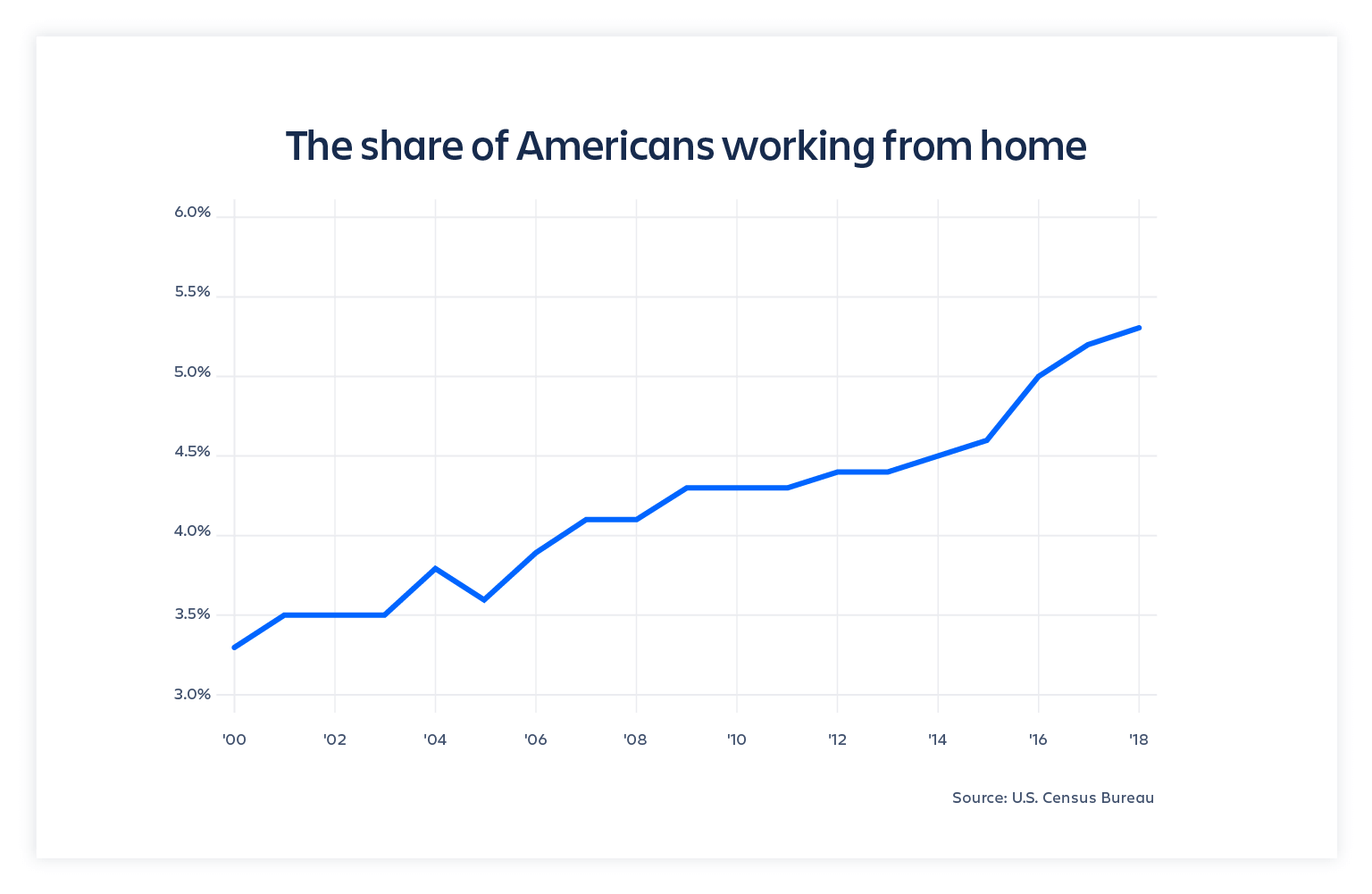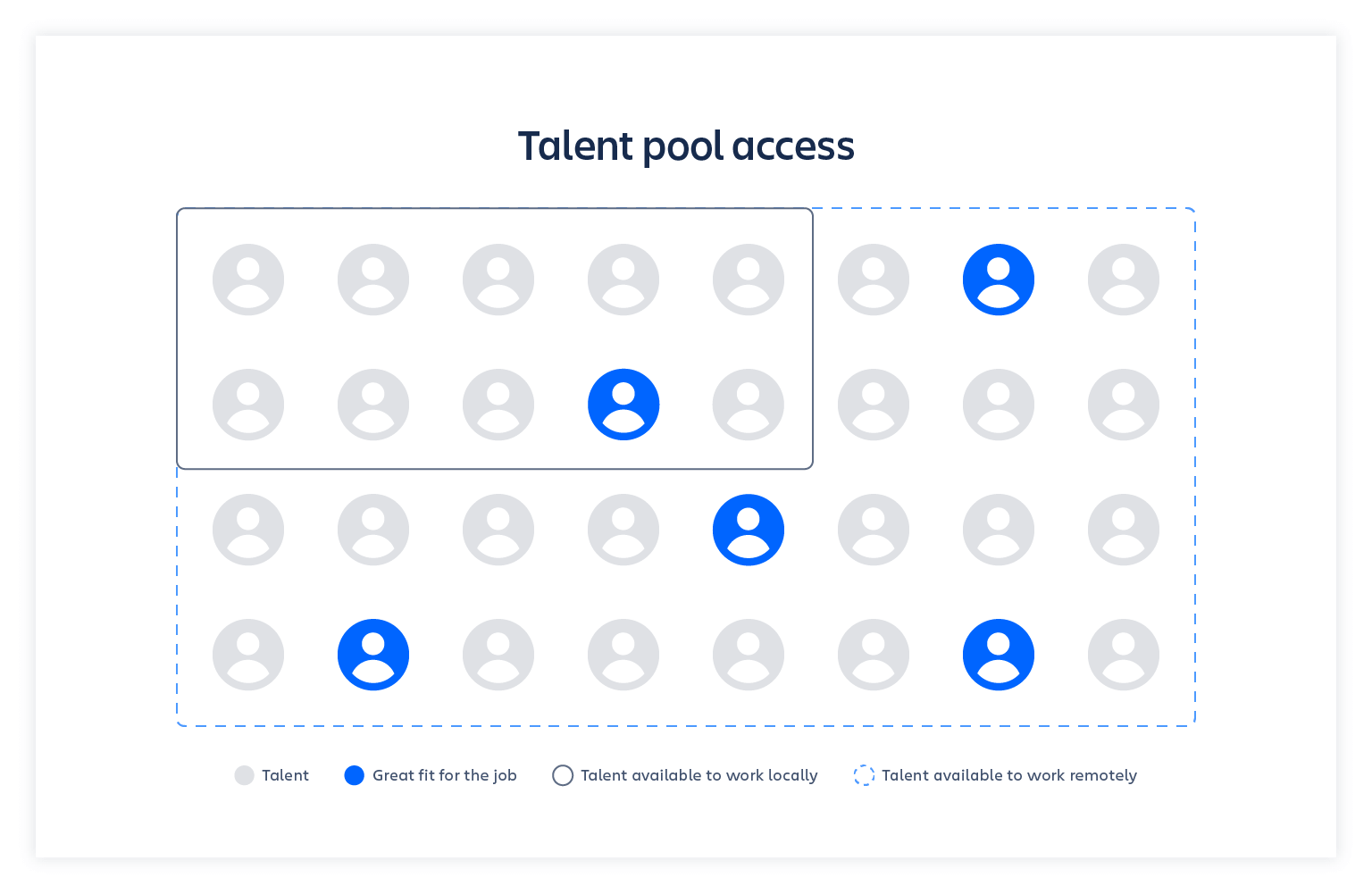Cloud is no longer a differentiator – it’s a strategic requirement for long-term success. So says Forrester’s Benchmark Your Enterprise Cloud Adoption report, and so say our customers, 90 percent of whom choose our cloud products over hosting Server or Data Center versions on-premise (on-prem).
Ten years ago, moving to the cloud was about staying ahead of the curve – no longer. Now, it’s about keeping up, and providing customers and employees with the always-on services they expect.
In fact, 74 percent of organizations say cloud gives them a competitive advantage, and by the end of 2020, experts predict that 83 percent of enterprise workloads will be in the cloud. If you aren’t among them, your teams may already be falling behind. If your competitors have instant access to the latest features and security upgrades and you don’t, it’s not hard to guess whose business is going to pull ahead of the pack.
So, how can cloud future-proof your teams? Let us count the ways:
1. Cloud gives you instant access to the latest features, security upgrades, and bug fixes
When you keep your software and computer power on-premises, every time new features pop up (usually two to four times per year), a manual upgrade is in order. The obvious costs here fall on the IT team, who need both time and budget to make the changes and often have to schedule downtime that may have an impact on the whole organization.
The less obvious cost to the business is that, when you’re upgrading only a couple times per year, each upgrade brings with it a lot of new features. This means every time you upgrade, teams face a learning curve on features they’ve never seen before. It also means, because you’re introducing so many new things at once, there’s a greater chance of also introducing some new bugs. And the fixes for those bugs might be three to six months off in the next upgrade.
With cloud, on the other hand, releases can be as small as a single bug fix or product improvement, enabled for a handful of customers at a time to lessen the risk of introducing a new bug. This means if something goes wrong, the change is easy to roll back and its impact is limited. Instead of waiting three months for the next release to fix a system bug, teams have the fix the moment it’s ready. It also means customer feedback can be implemented quickly, improving your systems on a continuous basis.
And because new features are also rolled out regularly and in small batches, it’s easier for your teams to keep up with the changes instead of having to re-train themselves several times a year. This not only keeps teams competitive by giving them immediate access to the latest features, but also keeps them nimble and connected to the systems they use every day.
Continuous releases also mean better security
Forty-eight percent of developers say they don’t have time to spend on important security issues, which means if you’re relying on your internal teams, security patches are probably taking longer than you’d like them to. With the right cloud vendor, this is not an issue. Security is prioritized and patches are released as they’re available.
Learn more about cloud security at Atlassian
2. Cloud helps you prioritize creativity and strategic work
Hosting your software and products on-prem always requires more time from your tech teams. Scaling to provide your users with more storage, inventory, or computing power can take days, if not weeks or even months. Upgrades and security patches require regular time commitment (not to mention the mental overheard of scheduling and management). And any major incidents and the sometimes-middle-of-the-night scramble to respond to an issue or security breach is entirely on the shoulders of your IT team.
With cloud, all that extra work is outsourced, which means bug fixes, problem management, and major incidents are the responsibility of your vendor. This means the IT team can ditch tedious, fruitless work like installing new servers or troubleshooting issues in favor of focusing on the strategic and creative work that’s essential and unique to your business.
Not to mention that most IT teams are already overtasked. Internal support teams field an average of just under 500 support tickets each month, and it takes more than 24 hours to respond to each, according to a study by Zendesk. And being overworked is the number one reason employees (and particularly high performers) quit, as reported by Forbes.
Moving support for servers, uptime, upgrades, and security patches off the IT team and onto your cloud vendor frees them up to respond more quickly to other requests – and it’s likely to help you retain your top talent.
3. Cloud empowers non-technical teams
With on-prem, any change – whether it’s a security upgrade, a new feature, or more computing power – has to go through IT. This not only burdens the tech team, but also slows things down for your non-technical teams, taking away their power to make quick improvements to their workflow, systems, and team dynamics.
With cloud, features like automated scaling and immediate security and feature upgrades mean teams can be nimble and agile. They can make changes to process and embrace new features and benefits that improve their workflows without going through lengthy approvals, dealing with delays, or overburdening IT.
Studies regularly show that employee and team empowerment strongly correlate with job performance, satisfaction, and retention. So, the benefits here have a ripple effect, empowering teams to do the best job they can and giving those same teams autonomy, job satisfaction, a sense of company loyalty, and the confidence to go after audacious goals and come up with creative solutions.
As Harvard Business Review explained, after their own extensive study on the topic:
“Empowered employees are more likely to be powerful, confident individuals, who are committed to meaningful goals and demonstrate initiative and creativity to achieve them. They typically have the freedom to generate novel ideas and the confidence that these ideas will be valued.”
Harvard Business Review
4. Cloud simplifies remote work and distributed teams
More than 4.7 million Americans already work remotely, while 95 percent of office workers say they want to work remotely. Twenty-six percent say they’ve quit a job because it didn’t support remote work. And 66 percent think offices will be obsolete by 2030. As the COVID-19 pandemic has taught us, sometimes the ability to work remotely can become crucial in an instant.

As the above data from the U.S. Census Bureau shows, remote work is trending upwards. And based on a recent report from Slack, this number has since jumped by nearly 25 percent, with an additional 16 million U.S. knowledge workers dusting off their home offices as a result of COVID-19.
For companies still fully on-prem, remote work is complicated. On-prem installations can be accessed remotely, but maintaining security while allowing access is a complex dance of passwords, firewalls, VPN barriers, and architectural limitations.
In contrast, cloud solutions are already accessible from anywhere with an internet connection. And cloud security is already built with remote work in mind (which is probably why 94 percent of businesses surveyed say security got better for them after moving to the cloud).
Even better, the same benefits that allow employees to work remotely – either full-time or at the drop of a hat in an emergency – also make it easy to support distributed teams.
The big benefit of distributed teams and remote work (aside from crisis management) is that it gives you access to a larger talent pool, both geographically and by opening up positions to those who have to work from home for reasons including disability or being a primary caretaker for an elderly parent or sick child.

Case Study: InVision
Seventy-four percent of companies say cloud gives them a competitive edge, and InVision is one of them.
With more than five million users, 800 employees, and a valuation of $2 billion, it might surprise you to learn that they have zero offices – the multi-billion-dollar business is fully remote.
The biggest challenge for a fully remote business is keeping everyone connected, which is why Wendy Stockholm, Director of InVision’s BizTech IT department, was thrilled to find that Atlassian cloud was built for collaborative, interconnected teams. In her own words:
“Our remote nature means you normally have to hunt down the person who knows the information you’re looking for or the tool that has the right data. But by centralizing [with Atlassian cloud] we now have one virtual space – somewhat of a physical representation of each department – where we can store knowledge and data, rather than relying on a person…This has helped keep us aligned, focused, and efficient. Reducing friction and disruption has been huge for improving visibility, reporting, and streamlining our practices.”
If you’re considering cloud migration, we’re here to help. Visit our Cloud Migration Center for more resources, migration guides, and a free extended cloud trial to help you assess our cloud products.




